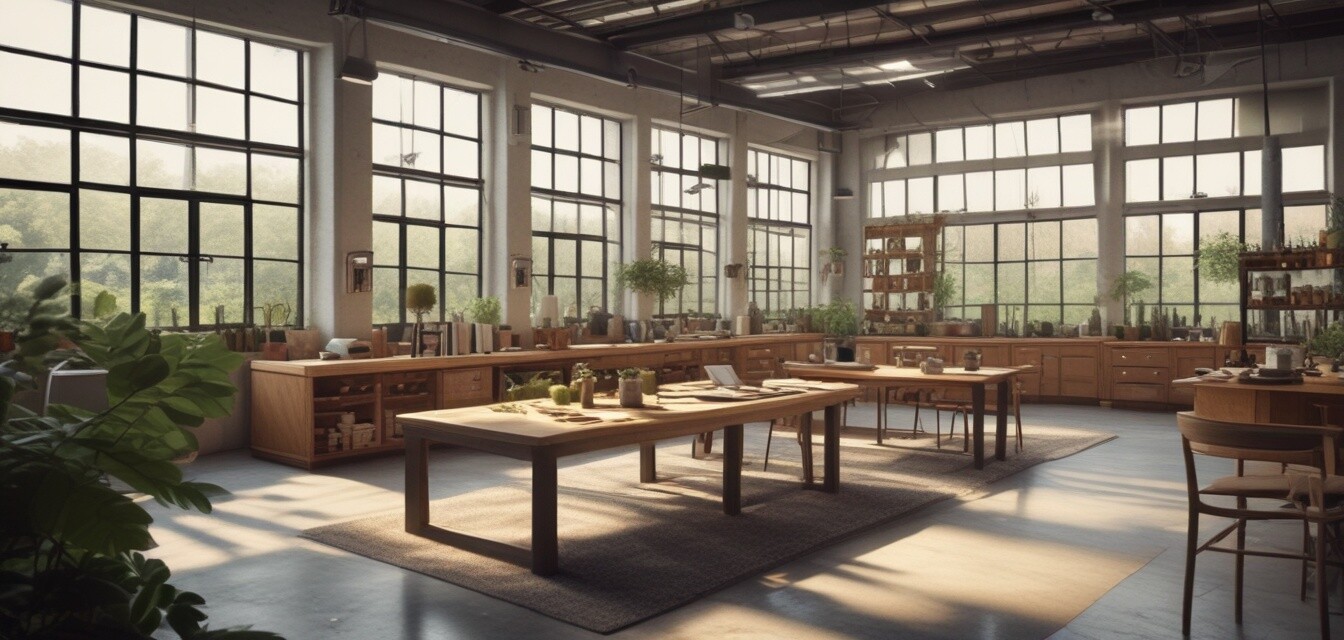
Innovations in Eco-Friendly Furniture Manufacturing
Key Takeaways
- Advancements in technology are transforming eco-friendly furniture manufacturing.
- Sustainable materials are becoming more accessible and affordable.
- Innovation in design contributes to the visual appeal of eco-friendly options.
- Consumers are increasingly inclined toward sustainable furniture solutions.
- The market continues to shift towards environmentally responsible practices.
As the demand for sustainable living continues to rise, so does the need for eco-friendly furniture. Innovations in eco-friendly furniture manufacturing have paved the way for new materials, technologies, and processes that not only reduce environmental impact but also enhance the aesthetic appeal and functionality of products like TV stands. This article will delve into the latest advancements that are reshaping the industry.
Technological advancements
Technological innovations have played a critical role in eco-friendly furniture manufacturing. The following advancements are currently shaping how furniture is made:
- CNC (Computer Numerical Control) technology: This technology allows precise cutting and shaping of sustainable materials, resulting in less waste.
- 3D printing: This technique enables the creation of intricate designs from biodegradable materials, opening fresh possibilities for unique furniture pieces.
- Smart technology integration: The incorporation of smart features into eco-friendly furniture enhances user experience, offering functionalities like built-in charging stations.
Table: Key technological advancements in furniture manufacturing
| Technology | Benefits |
|---|---|
| CNC Technology | Precision cutting reduces material waste. |
| 3D Printing | Creates complex designs using eco-friendly materials. |
| Smart Technology | Enhances functionality and user experience. |
Sustainable materials in focus
In addition to technology, using innovative sustainable materials is vital in modern furniture manufacturing. Some of the most popular materials include:
- Bamboo: A fast-growing grass that is incredibly durable and requires minimal resources.
- Reclaimed wood: Reusing wood from old furniture or buildings minimizes waste and preserves the planet’s resources.
- Recycled plastic: This material helps reduce plastic waste by turning it into stylish furniture options.
- Biodegradable composites: These materials break down naturally, reducing landfill waste.
Materials comparison table
| Material | Environmental Benefit | Durability |
|---|---|---|
| Bamboo | Fast regrowth, low impact | Very durable |
| Reclaimed wood | Reduces deforestation | High durability |
| Recycled plastic | Reduces landfill waste | Moderate durability |
| Biodegradable composites | Natural breakdown | Variable durability |
Design innovations
The evolution of design plays a significant role in making eco-friendly furniture appealing to consumers. Designers are now taking eco-friendliness into consideration, creating stylish, functional, and sustainable designs. Unique features such as:
- Modular designs that can be adapted to various spaces.
- Floating TV stands that make the most of wall space while being visually appealing.
- Multipurpose furniture that serves multiple functions to reduce the need for excess items.
The shift in consumer behavior
Recent studies show that consumers are increasingly becoming aware of the environmental impact of their choices. This shift in behavior can be attributed to:
- Greater awareness of climate change and its effects.
- An increase in information regarding sustainable living options.
- A demand for transparency from brands regarding their manufacturing practices.
Conclusion
The innovations in eco-friendly furniture manufacturing are not only beneficial to the environment but also offer consumers stylish and functional choices for their homes. With advancements in technology, sustainable materials, and design, the future of furniture, including TV stands, is looking brighter than ever. As the market shifts towards sustainability, brands that prioritize eco-friendliness will undoubtedly lead the way in the new era of furniture production.
Pros
- Reduction in environmental impact.
- Increased availability of stylish sustainable options.
- Technological advancements enhance functionality.
Cons
- Higher costs associated with sustainable materials.
- Lack of awareness among some consumers.
Further Reading
To explore more on the topic of eco-friendly furniture, check out our buying guides for eco-conscious options. You can also stay up-to-date with news and trends in the sustainable furniture industry and learn more about eco-friendly living practices.